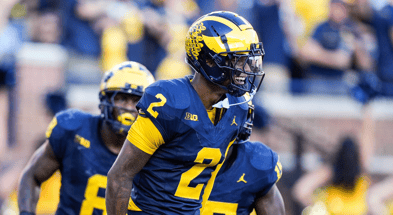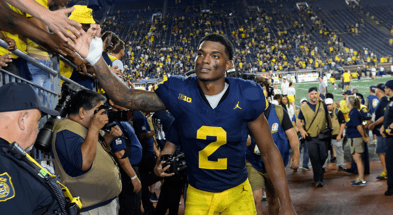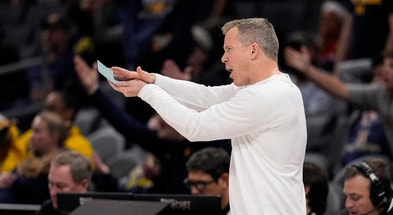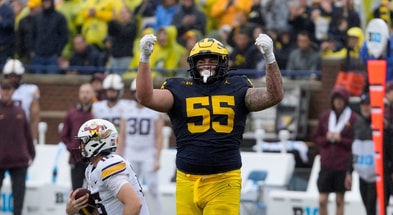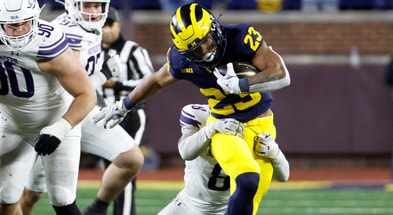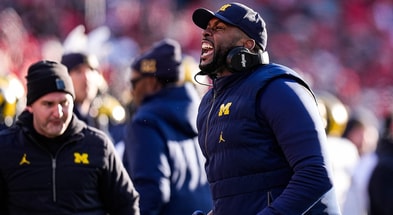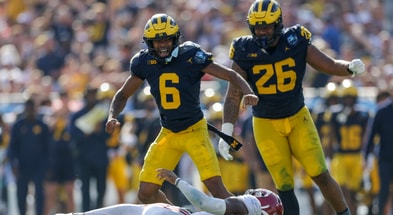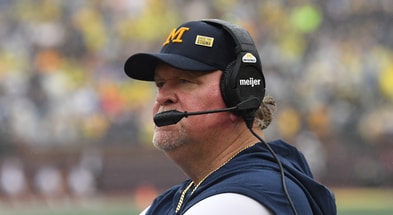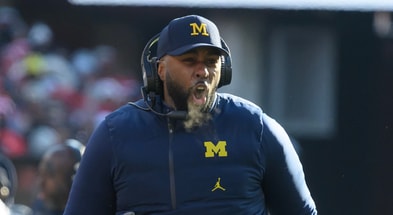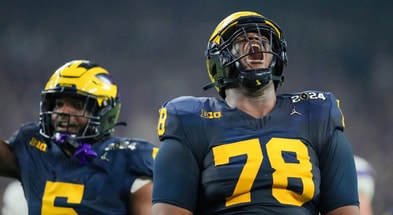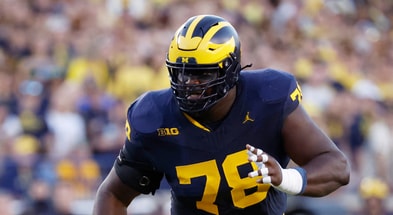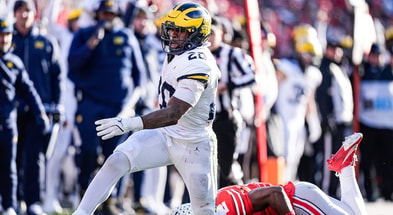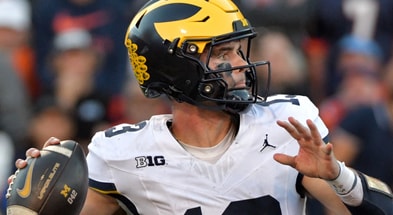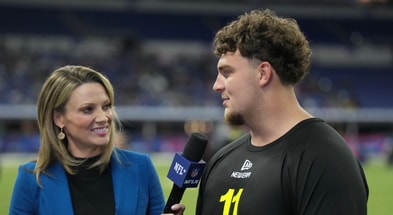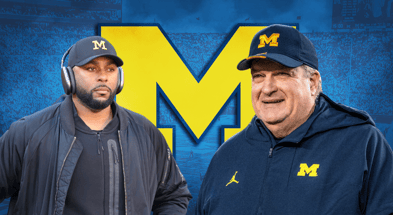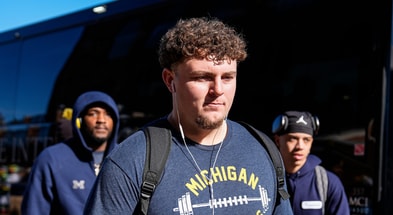GM Sean Magee on plan for revenue sharing, how taking 'Michigan-type guys' will contribute to sustained success

The Grant House v. NCAA settlement has received preliminary approval by Judge Claudia Wilken in October and is bound for an April 7 final approval hearing. If approval is reached, college athletic departments who opt into revenue sharing will be allowed $20.5 to compensate athletes beginning July 1. While these developments are still months away and there’s still plenty of uncertainty, Michigan Wolverines football and other programs are preparing for what’s to come.
“I believe that will be finalized — hopefully — in April. ‘Hope’ was the key word there,” Michigan football general manager Sean Magee said in an interview with Jon Jansen on the ‘In The Trenches’ podcast.
“Every school participating who are opting into this revenue-sharing plan that would come about once settled would have $20.5 million per athletic department to allocate and distribute as they see fit. So schools and programs around the country, departments, are deciding what those allocation levels are and how to best use that revenue received from media rights deals to then compensate their student athletes.”
There are mixed opinions on how much revenue-sharing money will be — and allowed to be — allocated to each sports team on college campuses, with potential Title IX complications being one hurdle. In short, it’s a moving target, even as Michigan prepares.
“It’s a daily task,” Magee explained. “It’s a little bit cliché, but we’re trying to fix the plane while we’re flying it, as well. That’s just the reality of this moving target environment. So, it is something that we’re planning, we’re talking about every day — and it’s been that way for months, of how to best execute this.
“My time in the NFL, seeing the world through that lens, valuation in the NFL is pretty straightforward. It’s your production and it’s the comps, and it’s some of the comparable values. Based on the level you’re performing, the expectation of how you have and will perform, there should be an appropriate compensation level. Very straightforward in that league.
“In college football, the hardest part of this is operating without any comps. All we know are the rumors and innuendo of what we believe other schools are doing, but it’s not that transparent, ubiquitous information that’s out there that exists in a real market, like the NFL.”
The current setup for the House v. NCAA settlement — as is currently structured and, of course, subject to change — is that student-athletes will have to report NIL deals worth greater than $600 to a third-party clearinghouse run by large firm Deloitte. NIL collectives will no longer be able to pay athletes, and only “true NIL” with companies is allowed.
“The expectation with this revenue-share model is that the revenue-share model will account for the majority of the compensation,” Magee said. “But true NIL — really the spirit and intent of what allowing student-athletes to benefit from their true NIL was — that will still be in place.
“So that’s the goal, is saying, ‘How can we eliminate some of this other pay-for-play?’ If we distribute revenue, that’s achieved from our participation in college athletics at an institution, and we still allow our student-athletes to benefit from their name, image and likeness, that’s theoretically a much more stable environment.”
While the House v. NCAA settlement isn’t a final destination for the stabilization of a very unstable college athletics climate, Magee believes it’s a positive.
Top 10
- 1New
Adou Thiero
Injury update
- 2
Charles Barkley
Advises Chad Baker-Mazara with Nick Saban quote
- 3Trending
Bracketology
Updated as Champ Week begins
- 4
ACC Controversy
Notre Dame wins on foul call
- 5Hot
Paul Finebaum
Predicts multiple ACC departures
Get the On3 Top 10 to your inbox every morning
By clicking "Subscribe to Newsletter", I agree to On3's Privacy Notice, Terms, and use of my personal information described therein.
“It’s a step,” Magee noted. “And it’s the first, most tangible step that we’ve had. Is it the final one? I can’t imagine that it is. But it’s the first and most notable step towards change.
“This is a rapidly-changing environment. It’s gonna look very different in these different segments of the next few years, but it is a first step.”
‘Michigan-type’ guys
Michigan has gained steam as an NIL / pay-for-play power in recent months, but as stated, it’s uncertain how long collectives will be able to compensate athletes. On top of that, the Wolverines aren’t just looking to pay for the best players — they’re still looking to maintain and build a strong culture.
“One of the biggest questions I get both publicly and running into fans and alums, anyone else, Michigan supporters, there’s an expectation of saying, ‘Oh, we have endless resources now. Why can’t we just go acquire this guy and this guy and this guy? Well, we obviously have these roster holes; why can’t we go get that player?’” Magee said. “That’s not the environment right now.
“We don’t have endless resources. We have tremendous resources, but it isn’t an endless pot that we’re drawing from, that we can just go and get player X, Y or Z.
“We’re still building this thing to a fit. We’re taking Michigan players — Michigan-type guys. That’s how this thing is built, that’s how it’ll continue to be built. That’s what will propel us to a sustainable championship level.
“Yeah, it would be great, if this was just about talent accumulation. You see guys and programs and teams that were just about talent accumulation. We’re gonna add as much talent as possible, and that could work in the short term. But we truly believe, in order to build a sustainable model for success, it needs to be based on your core values and what the fit is for your program.”


